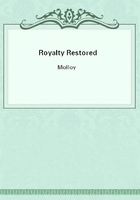
第114章 CHAPTER XIX.(5)
James's Square, which was built at this time; Berkeley House, which stood on the site now occupied by Berkeley Square, a magnificent structure containing a staircase of cedar wood, and great suites of lofty rooms; Leicester House, situated in Leicester Fields, subsequently known as Leicester Square, behind which stretched a goodly common; Goring House, "a very pretty villa furnished with silver jars, vases, cabinets, and other rich furniture, even to wantonnesse and profusion," on the site of which Burlington Street now stands; Clarendon House, a princely residence, combining "state, use, solidity, and beauty,"surrounded by fair gardens, that presently gave place to Bond Street; Southampton House, standing, as Evelyn says, in "a noble piazza--a little town," now known as Bloomsbury Square, whose pleasant grounds commanded a full view of the rising hills of Hampstead and Highgate; and Montagu House, described as a palace built in the French fashion, standing on the ground now occupied by the British Museum, which in this reign was backed by lonely fields, the dread scenes of "robbery, murder, and every species of depravity and wickedness of which the heart can think."Besides the grounds and gardens surrounding these stately mansions, a further aspect of space and freshness was added to the capital by public parks. Foremost amongst these was St.
James's, to which the merry monarch added several fields, and for its greater advantage employed Monsieur La Notre, the famous French landscape-gardener. Amongst the improvements this ingenious man effected were planting trees of stately height, contriving a canal one hundred feet broad and two hundred and eighty feet long, with a decoy and duck island, [The goodnatured Charles made Monsieur St. Evremond governor of Duck Island, to which position he attached a salary much appreciated by the exile. The island was removed in 1790 to make room for fresh improvements.] and making a pleasant pathway bordered by an aviary on either side, usually called Bird Cage Walk. An enclosure for deer was formed in the centre of the park; not far removed was the famous Physic Garden, where oranges were first seen in England; and at the western end, where Buckingham Palace has been erected, stood Arlington House, described as "a most neat box, and sweetly seated amongst gardens, enjoying the prospect of the park and the adjoining fields."The great attraction of St. James's Park was the Mall, which Monsieur Sorbiere tells us was a walk "eight hundred and fifty paces in length, beset with rows of large trees, and near a small wood, from whence you may see a fine mead, a long canal, Westminster Abbey, and the suburbs, which afford an admirable prospect." This path was skirted by a wooded border, and at the extreme end was set with iron hoops, "for the purpose of playing a game with a ball called the mall." ["Our Pall Mall is, Ibelieve, derived from paille maille, a game somewhat analogous to cricket, and imported from France in the reign of the second Charles. It was formerly played in St. James's Park, and in the exercise of the sport a small hammer or mallet was used to strike the ball. I think it worth noting that the Malhe crest is a mailed arm and hand, the latter grasping a mallet."--NOTES ANDQUERIES, 1st series, vol. iii. p. 351.]
In St. James's Park Samuel Pepys first saw the Duke of York playing at "pelemele"; and likewise in 1662 witnessed with astonishment people skate upon the ice there, skates having been just introduced from Holland; on another occasion he enjoyed the spectacle of Lords Castlehaven and Arran running down and killing a stout buck for a wager before the king. And one sultry July day, meeting an acquaintance here, the merry soul took him to the farther end, where, seating himself under a tree in a corner, he sung him some blithesome songs. It was likewise in St. James's Park the Duke of York, meeting John Milton one day, asked him if his blindness was not to be regarded as a just punishment from heaven, due to his having written against the martyred king. "If so, sir," replied the great poet and staunch republican, "what must we think of his majesty's execution upon a scaffold?" To which question his royal highness vouchsafed no reply.